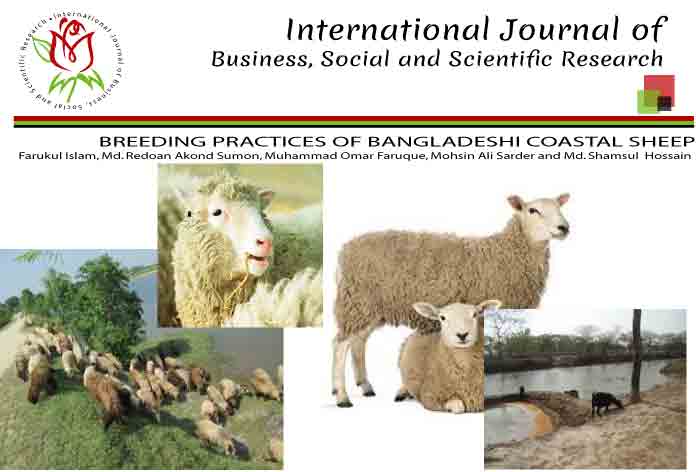BREEDING PRACTICES OF BANGLADESHI COASTAL SHEEP

Data on husbandry and breeding practices were collected from 96 sheep keeping farmers of villages from coastal region in Bangladesh during May 05, 2016 to June 07, 2016. Many farmers (66.70%) did not provide water to their sheep and mainly green grass (100%) and tree leaves (96.90%) were used for feeding the sheep. Many of the farmers did graze their sheep from dawn to dusk. Majority of the sheep farmers (63.50%) employed workers to take care of their sheep and there were two types of farmers. All farmers took bath of their sheep and majority of the farmers vaccinated (53.10%) and used anthelmintics (53.10%) regularly. All farmers were keeping sheep for meat purpose. Traditional natural mating system (95.90%) followed by the sheep farmers at study sites, where rams were allowed to mate with a heated ewe without considering the relationship between ram and ewes. In this traditional mating system at study site, farmers allowed the ram to mate with half sibs, full sibs, also allowed their rams to mate with his first cousin sisters and second cousin sisters. However, rams in the herd even could mate with his grand dam or even with ewe 4 generations senior to him. On the contrary 55.20% farmers were replacing their rams either from own herd or from outside the herd. At study site many farmers pointed out that making available fresh water for sheep was a big issue, majority of them were seeking grazing land but most of the farmers were in an opinion that making available of hi-merit breeding ram would be worthwhile for coastal sheep improvements. However, it could be concluded that, the traditional mating practices is neither an inbreeding system nor an out breeding system, rather it is a mix of the two and which indicates the clear absence of systematic breeding in coastal sheep at study site. For coastal sheep improvement fresh water, grazing land and hi-merit rams were very much important.

